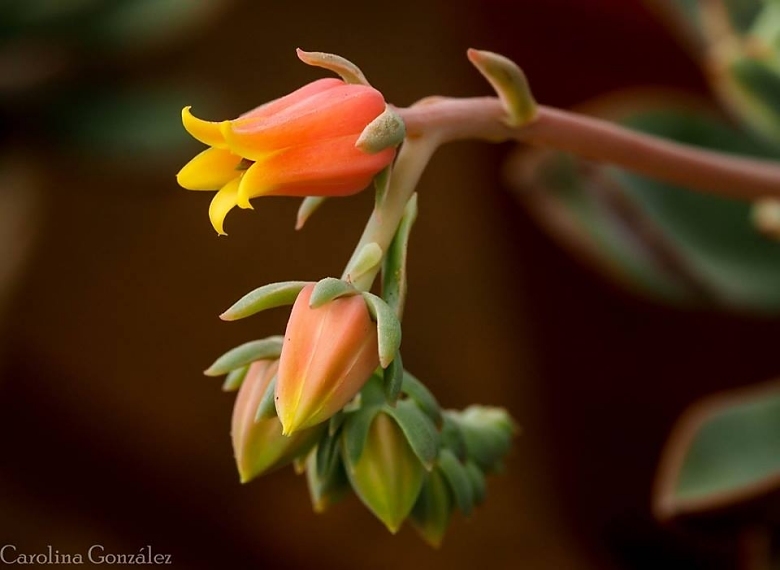Accepted Scientific Name: Echeveria secunda Booth ex Lindl.
Edwards's Bot. Reg. 24(Misc.): 59 1838

Echeveria secunda var. glauca Photo by: Carolina González
Synonyms:
See all synonyms of Echeveria secunda
back
Accepted name in llifle Database:Echeveria secunda Booth ex Lindl.Edwards's Bot. Reg. 24(Misc.): 59 1838Synonymy: 19
back
Common Names include:
ENGLISH: glaucous echeveria
RUSSIAN (Русский): Эxеверия сизая
Description: Echeveria secundaSN|27133]]SN|27133]] var. glauca differs from standard Echeveria secundaSN|27133]]SN|27133]] only in having thinner leaves, to 2 cm across, rather more pointed and still a lighter more glaucous-blue. The leaves are scarcely keeled, almost flat, truncate to rounded, and distinctly flaccid. This variety is one of the most common, it is robust and forms beautiful cushions up to 50 cm in diameter. The rosettes are blue 10-15 cm in diameter and tightly packaged. Superb summer bloom yellow and red are produced in summer. It is perhaps the most generally grown variety.
Subspecies, varieties, forms and cultivars of plants belonging to the Echeveria secunda group
 Echeveria secunda Booth ex Lindl.: has clustering pale bluish-green rosette. The inflorescence is a one-sided arching cyme to 30cm tall, with urn-shaped red and yellow tipped, nodding flowers. Distribution: Mexico.
Echeveria secunda Booth ex Lindl.: has clustering pale bluish-green rosette. The inflorescence is a one-sided arching cyme to 30cm tall, with urn-shaped red and yellow tipped, nodding flowers. Distribution: Mexico.- Echeveria secunda var. byrnesii (Rose) Poelln.
 Echeveria secunda var. glauca (Baker) Otto: has thinner leaves, to 2 cm across, more glaucous, scarcely keeled, almost flat, truncate to rounded, distinctly flaccid and still a lighter more glaucous-blue.
Echeveria secunda var. glauca (Baker) Otto: has thinner leaves, to 2 cm across, more glaucous, scarcely keeled, almost flat, truncate to rounded, distinctly flaccid and still a lighter more glaucous-blue.- Echeveria secunda var. major hort.: is a larger mealy form of var. glauca.
- Echeveria secunda var. pumila (Van Houtte) Otto: is a smaller form, with leaves to 1.5 cm across, narrow, thin and scarcely keeled, almost flat and acute that are of the colour of var. major.










